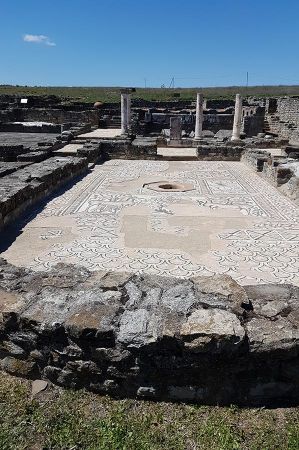Stobi - archaeologists host during the campers' cultural trip
- Written by Portal Editor
For a number of years, close contacts with the Stobi archaeological site in Macedonia have been established, especially with the group of archaeologists and conservators and their extensive work in the ancient ruins of Stobi, with its impressive basilica and the impressive theater.
Stobi, the main town of the ancient landscape Paionien, is more than a really interesting stopover on the Balkan route to the south.

Combine your visit to the excavations at the location for your overnight stay while traveling to the South.
Main route that once connected the middle Danube with the Aegean coast

The ruins of Stobi are today the most important remains in the territory of the Republic of Macedonia. The huge gravel site is located just north of the Macedonian A1 motorway, which is also called Autoput Bratstvo i jedinstvo, south of Gradsko. The excavation site and the restored buildings today form a really interesting open-air museum of archeology.
Philip II conquered Paionia around 350 BC.
After the victory of the Romans about Macedonia in 167 BC, the Roman province of Macedonia, to which Stobi belonged, was formed in 148 BC. The city played no significant role in the administrative organization of the Romans. In the city, however, several Roman roads, intersections of Via Egnatia and Via Militaris crossed each other. The city developed well and the population grew strongly, as can be seen in the multiple expansion of the built-up area.
We had already announced our present visit in the run-up to the part-guided camper-cultural trip through Albania, Macedonia and Greece, and so one of the archaeologists welcomed us to the archaeologists' accommodation shortly after our arrival, introduced a brief overview of the excavation site and the special options of Stobi in particular.
Discovered Jewish institutions were a highlight
Please also read:
Excavation and Conservation works in Stobi in Macedonia
Heracleia Lynkestis - a day trip to Bitola
-
-
-
-
-
-
-
-
-
-
-
-
-
-
-
-
-
-
-
-
-
-
-
-
-
-
-
https://www.alaturka.info/en/macedonia/stobi/3864-stobi-archaeologists-host-during-the-campers-cultural-trip/amp#sigProId633691f126